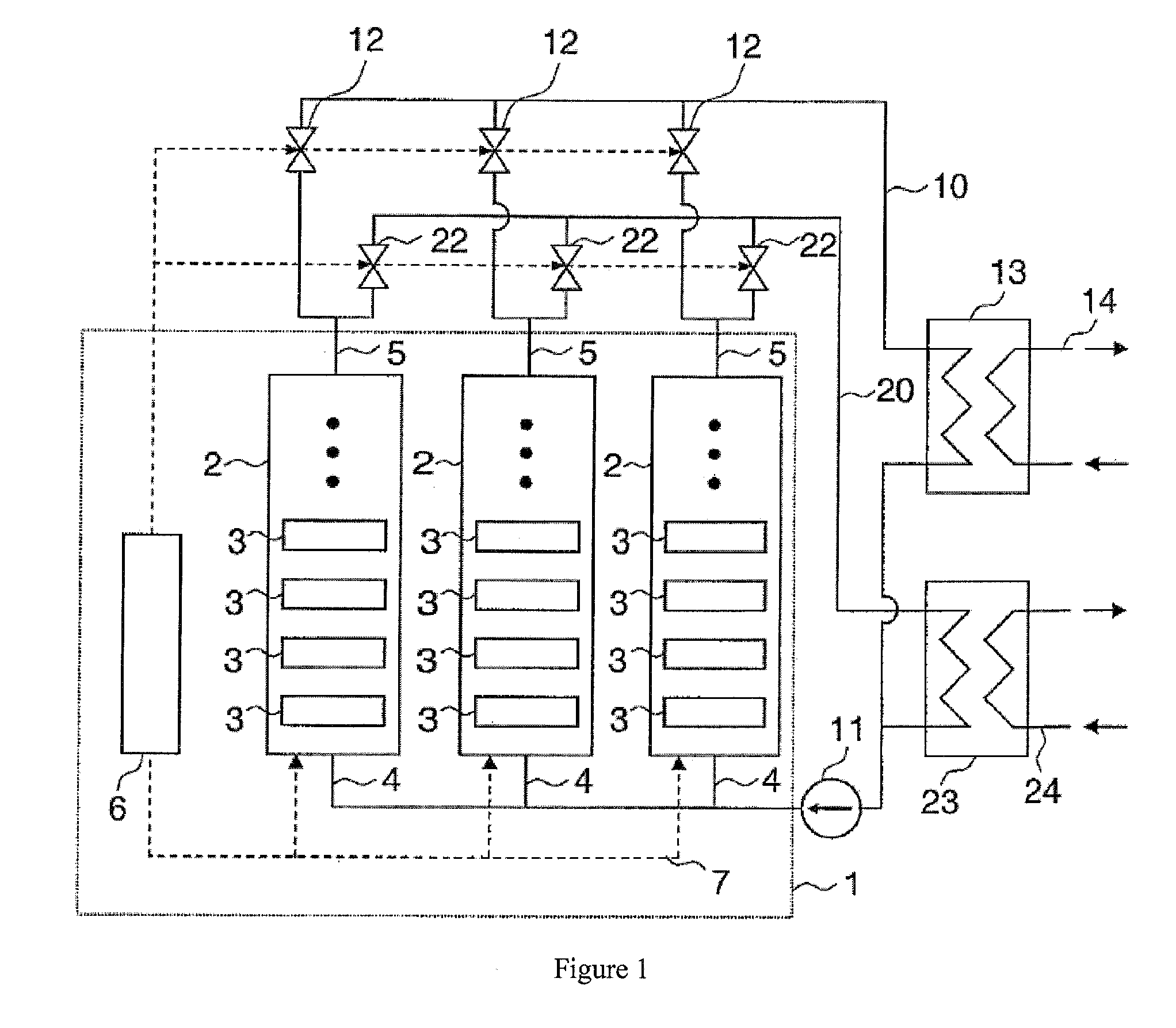Method and system for using the waste heat of a computer system
- Summary
- Abstract
- Description
- Claims
- Application Information
AI Technical Summary
Benefits of technology
Problems solved by technology
Method used
Image
Examples
Embodiment Construction
[0019]FIG. 1 shows schematically a computer system 1 that has a plurality of servers each with one or more processors 3 in several server cabinets 2. Furthermore, in the computer system there is a scheduler 4 for distributing jobs to the processors 3 of the computer system 1. The scheduler 4 is connected via a management network 5 to the processors of the computer system 1. Each server cabinet 2 is attached via a coolant inlet 6 and a coolant outlet 7 to a coolant circuit 10 with a coolant pump 11, valves 12, and a heat exchanger 13. The heat exchanger 13 thermally couples the coolant circuit 10 to a utilization circuit 14. In addition, another coolant circuit 20 is provided that is similarly connected to the server cabinets 2. The other coolant circuit 20 has an additional coolant pump 21, additional valves 22, and an additional heat exchanger 23. The additional coolant circuit 20 is thermally coupled via this additional heat exchanger to an additional utilization circuit 24. For c...
PUM
 Login to View More
Login to View More Abstract
Description
Claims
Application Information
 Login to View More
Login to View More - R&D
- Intellectual Property
- Life Sciences
- Materials
- Tech Scout
- Unparalleled Data Quality
- Higher Quality Content
- 60% Fewer Hallucinations
Browse by: Latest US Patents, China's latest patents, Technical Efficacy Thesaurus, Application Domain, Technology Topic, Popular Technical Reports.
© 2025 PatSnap. All rights reserved.Legal|Privacy policy|Modern Slavery Act Transparency Statement|Sitemap|About US| Contact US: help@patsnap.com



